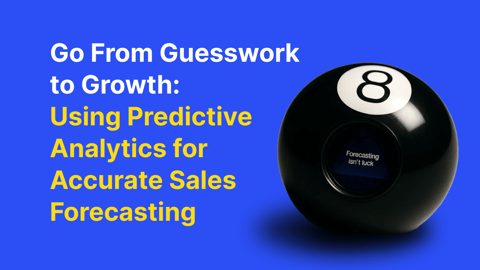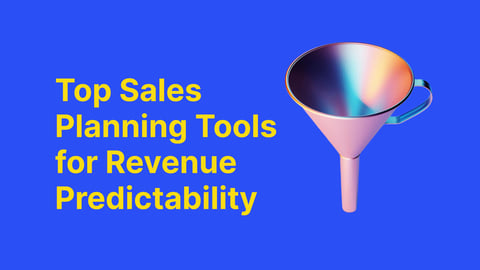Who would say no to the superpower of a psychic ability in order to predict the future? Imagine being able to know what numbers were coming up in the lottery, when a pandemic was coming (or going) and what sales trends and figures were just over the horizon. Surely there’s a gap in the Marvel Universe for a predictive sales guru?
While a vacancy next to Chris Hemsworth and Robert Downey Jr may not (sadly) be your next move, the good news is that the proven art or science of sales software and data modelling is making forecasting much less of a guessing game than in times past.
Let’s put that crystal ball to one side and see what the future (and present) is telling us about the intuitive powers of predictive sales analysis.
The first thing to clear up is that predictive sales is not some dark art covertly performed behind the boardroom doors. Neither does it follow one pattern. But there is an element of alchemy and due diligence paid to tried and tested factors. Here’s just a few of the factors to consider for more accurate predictive sales.
Forecasting with Forethought
Why stick a finger in the wind when you can call upon a piece of software to remove much of the guesswork? If you’re in the market for new or improved forecasting tools, ensure that your product works on not just historical data but sets algorithms that detect trends, patterns and demand fluctuations. A holistic piece of software like the sales performance management (SPM) package offered by Varicent provides insight not just into individuals or teams performance, but on a single, cloud-based platform aligns and integrates this analysis with reporting and dashboards relating to territories and quota management as well. As well aiding you with establishing likely sales patterns, this package is particularly rich when reviewing individual sales performance and how this is likely to measure up for future achievements.
Allowing for Uncertainty
No horoscope or tarot reading could have prepared us for COVID-19, but common sense and hundreds of lab hours from scientists and researchers at least provided some direction to mitigate for the enormous, unseen repercussions of the pandemic. Applying the same logic to sales forecasting, the way past the crisis is to use predictive software to at least provide ‘what-if’ scenarios. For example, it could be testing how successful a new product or field team is likely to be in an untapped territory , or perhaps calculating the risk of pulling out a sales team from a region that is no longer rich in market opportunity. By mapping these situations before they happen and mining the data for all its worth, you’re in the strong position of being prepared for any eventuality.
Put Your Trust in the Data
While we’re not asking you to believe in magic, success in predictive sales, as touched upon above, is often interlinked with understanding and exploiting data and analytics. And the smartest route to mastering patterns, trends and potential outcomes is by bringing in a software package such as Symon.AI from Varicent . This product has been designed to take into account not only ‘what if?’ scenarios but provides you with the ability to quickly compare yourself to the competition in a host of situations. These include understanding demand and supply, calculating risk, identifying prospects and turning disparate data into the meat and bones of a long-term business strategy.
Having read this, you may still be undecided whether predictive sales forecasting is more science than art. You can be certain though that success in this field isn’t lucky guesses or serendipity. If you’re ready to put your faith, fate and business acumen into sound sales software, contact your Varicent rep today or visit www.varicent.com .




